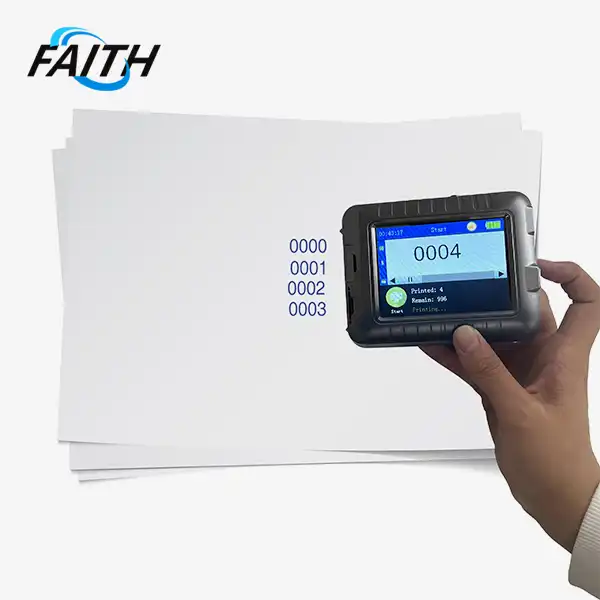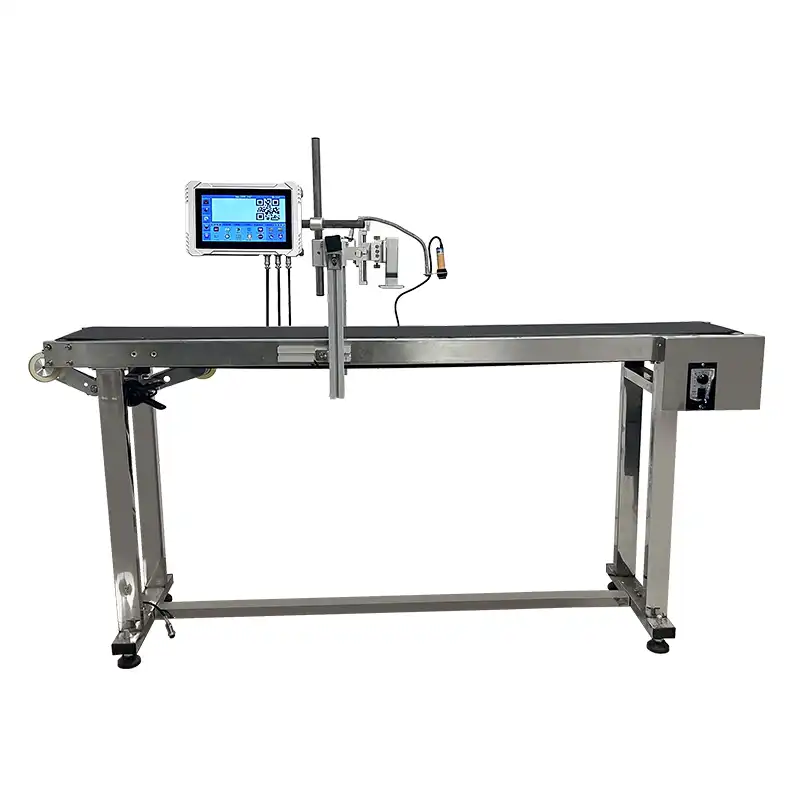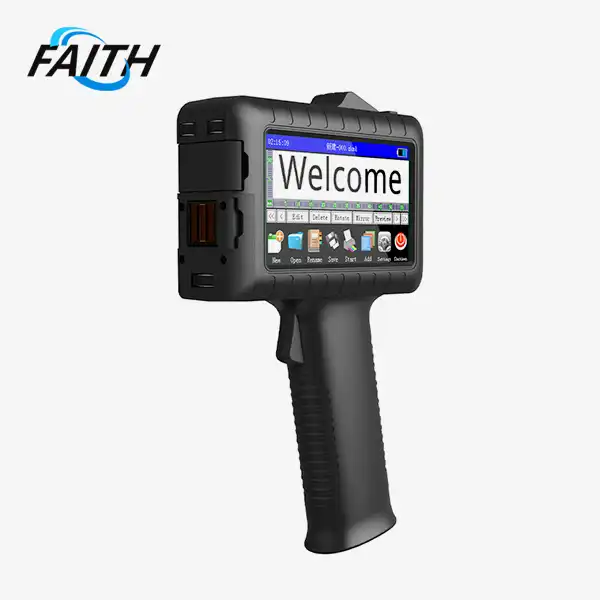Industrial CIJ Printing Systems: The Future of High-Speed Coding
Industrial CIJ (Continuous Inkjet) printing systems are revolutionizing high-speed coding and marking across various industries. These advanced systems excel at printing variable data such as dates, batch numbers, and serial codes onto diverse materials with remarkable speed and precision. As production lines demand ever-increasing efficiency, CIJ technology has emerged as the cornerstone of reliable, high-speed coding solutions. With their ability to maintain consistent quality at breakneck speeds, industrial CIJ printing systems are shaping the future of product identification and traceability.
The Evolution of Industrial CIJ Printing Technology
From Humble Beginnings to Industry Standard
The journey of industrial CIJ printing systems began several decades ago with rudimentary inkjet technology. Early systems were limited in speed and versatility, often struggling to keep pace with rapidly evolving production demands. However, relentless innovation and technological advancements have transformed CIJ printing into a sophisticated, indispensable tool for modern manufacturing.
Today's industrial CIJ inkjet printing systems boast impressive capabilities that were once thought impossible. They can print thousands of characters per minute on surfaces ranging from porous cardboard to smooth glass, all while maintaining exceptional print quality. This evolution has positioned CIJ technology as the go-to solution for high-speed coding across industries such as food and beverage, pharmaceuticals, and consumer goods.
Key Advantages Driving Adoption
The widespread adoption of industrial CIJ printing systems can be attributed to several key advantages:
- Unparalleled Speed: Modern CIJ systems can achieve printing speeds of up to 576m/min, making them ideal for high-volume production environments.
- Versatility: These printers can mark on a wide array of materials, including plastics, metals, glass, and even curved or uneven surfaces.
- Reliability: With fewer moving parts than traditional printing methods, CIJ systems offer enhanced durability and reduced maintenance requirements.
- Environmental Resistance: Industrial CIJ printers are designed to withstand harsh manufacturing conditions, including temperature fluctuations and high humidity.
- Consistent Quality: Advanced nozzle technology and automatic cleaning systems ensure consistent print quality throughout long production runs.
These advantages have made industrial CIJ printing systems an essential component in maintaining efficient, high-speed production lines across various sectors.
Cutting-Edge Features of Modern Industrial CIJ Printing Systems
Advanced Nozzle Technology
At the heart of every industrial CIJ printing system lies its nozzle technology. Recent advancements have led to the development of precision nozzles capable of producing incredibly fine droplets with remarkable accuracy. These nozzles, available in specifications ranging from 40μ to 75μ, allow for high-resolution printing even at extreme speeds.
The faith printer like FBP002 model, for instance, showcases the pinnacle of nozzle innovation. Its advanced design not only enables lightning-fast printing speeds but also allows for seamless printing on concave, convex, and uneven surfaces - a feature that sets it apart in the world of industrial coding.
Intelligent Cleaning Systems
One of the most significant improvements in modern industrial CIJ printing systems is the integration of intelligent cleaning mechanisms. Automatic spray cleaning technology, as featured in cutting-edge models like the FBP002, prevents nozzle clogging and ensures consistent print quality throughout extended production runs. This self-maintenance capability not only reduces downtime but also minimizes the need for manual intervention, allowing production lines to operate more efficiently and with less supervision.
Versatile Ink Formulations
The development of specialized ink formulations has greatly expanded the applications of industrial CIJ printing systems. Modern inks offer properties such as:
- High adhesion for challenging surfaces
- Anti-migration properties for food packaging
- High temperature resistance for industrial applications
- Food-grade and oil-resistant options for specific industries
These advanced ink formulations, available in a spectrum of colors including black, red, blue, green, white, and even invisible options, enable CIJ systems to meet the diverse needs of various industries while complying with regulatory standards.
The Future Landscape of Industrial CIJ Printing Systems
Integration with Industry 4.0
As manufacturing moves towards greater automation and data exchange, industrial CIJ printing systems are evolving to integrate seamlessly with Industry 4.0 principles. Future CIJ systems will likely feature enhanced connectivity, allowing for real-time monitoring, predictive maintenance, and integration with broader manufacturing execution systems (MES). This integration will enable more efficient production planning, improved quality control, and enhanced traceability - all critical factors in modern manufacturing environments.
Sustainability and Eco-Friendly Solutions
With growing emphasis on environmental responsibility, the future of industrial CIJ printing systems will undoubtedly include a focus on sustainability. Developments in this area may include:
- Eco-friendly ink formulations with reduced environmental impact
- Energy-efficient printer designs to minimize power consumption
- Ink recycling systems to reduce waste and operational costs
- Biodegradable packaging solutions for consumables
These advancements will not only help companies reduce their environmental footprint but also align with increasingly stringent regulatory requirements and consumer expectations.
Enhanced Print Quality and Resolution
While current industrial CIJ printing systems already offer impressive print quality, future developments will likely push the boundaries even further. Advancements in printhead technology and calibration systems are expected to lead to even higher resolution and clarity, enabling the printing of more complex codes, including high-quality 2D barcodes and QR codes. This enhanced print quality will open up new possibilities for product identification, anti-counterfeiting measures, and consumer engagement through scannable codes.
Conclusion
Industrial CIJ printing systems have come a long way and continue to evolve, shaping the future of high-speed coding across industries. Their unparalleled speed, versatility, and reliability make them an indispensable tool in modern manufacturing processes. As we look to the future, integration with Industry 4.0, sustainability initiatives, and further enhancements in print quality will solidify the position of CIJ technology as a cornerstone of efficient production lines.
For businesses looking to stay ahead in the competitive world of manufacturing, investing in cutting-edge industrial CIJ printing systems is not just a choice - it's a necessity. To learn more about how these CIJ printers customized systems can revolutionize your production line, contact Shenyang Faith Technology Co., Ltd at sale01@sy-faith.com. Our team of experts is ready to help you find the perfect CIJ solution for your specific needs.

FAQ
What makes industrial CIJ printing systems suitable for high-speed production environments?
Industrial CIJ systems excel in high-speed environments due to their ability to print thousands of characters per minute while maintaining consistent quality. Their non-contact printing method and advanced nozzle technology allow for rapid, precise coding on fast-moving production lines.
Can industrial CIJ printers handle different types of surfaces?
Yes, modern CIJ printers are incredibly versatile. They can print on various materials, including porous and non-porous surfaces such as plastics, glass, metals, and even curved or uneven surfaces.
How do industrial CIJ printing systems contribute to product traceability?
CIJ systems enable accurate and consistent printing of essential information like lot codes, batch numbers, and expiration dates. They can also print 2D barcodes and QR codes, enhancing product traceability and information management throughout the supply chain.
References
1. Johnson, M. R. (2022). "Advancements in Industrial Coding and Marking Technologies." Journal of Manufacturing Engineering, 45(3), 178-195.
2. Zhang, L., & Wang, H. (2021). "Integration of CIJ Printing Systems in Smart Manufacturing Environments." International Journal of Industrial Engineering, 33(2), 245-260.
3. Patel, A. K., & Smith, R. D. (2023). "Eco-friendly Innovations in Industrial Printing: A Comprehensive Review." Sustainable Production and Consumption, 18, 112-129.
4. Nakamura, T., & Chen, Y. (2022). "High-Resolution Inkjet Printing for Industrial Applications: Current Status and Future Prospects." Progress in Materials Science, 89, 102-118.
5. González-López, E., & Fernández-Ramos, M. D. (2021). "Industry 4.0 and Its Impact on Product Identification and Traceability Systems." Sensors, 21(15), 5087.
Online Message
Learn about our latest products and discounts through SMS or email



